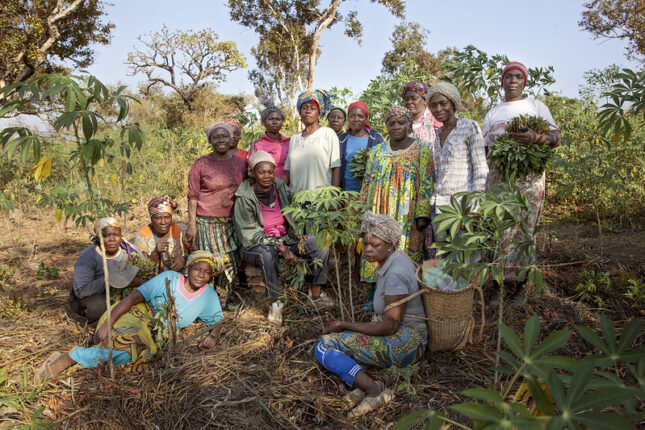-
State of the World Population Report: Interwoven Lives
May 29, 2024 By Maternal Health Initiative Staff
In 2024, the world marks the thirtieth anniversary of the 1994 International Conference on Population and Development (ICPD) in Cairo. At this pivotal meeting, 179 countries produced a watershed Program of Action (PoA) that put people at the center of development to better realize health, rights and choices for all. This PoA prioritized human rights, the empowerment of women and girls, and addressed existing inequalities. It also put forth a new strategy that emphasized vital linkages between population and development that moved away from a focus on demographic targets, like fertility rates, and shifted the focus to the needs of individual women and men.
Sexual and reproductive health is at the core of this 1994 Program of Action, and it revolutionized the United Nation’s Population Fund’s (UNFPA) mission towards a more proactive role in providing education, funding, and resources, as well as inspired policy changes around family planning and reproductive health. This year, UNFPA’s State of the World Population Report argues that the thirtieth anniversary of the ICPD (ICPD30) is an opportunity to pivot health and social systems towards providing services that empower all people, respect their diversity, uphold their dignity, and support them to realize their rights and bodily autonomy. It also calls for renewed commitments to unwind the disparities and inequities that still divide societies.
The report looks at the intersectionality of needs and communities through the art of weaving. “In weaving – which is inherent to cultures and communities everywhere – the strength of any single thread is vastly multiplied by braiding. Similarly, the education, autonomy, health and potential of every individual is tenuous alone but vastly strengthened when woven together with the rights, health and well-being of others,” states the report.
What goals remain to be strengthened to reduce maternal deaths
The most recent 2023 estimates, using the best available data and practices, hold that the global maternal mortality ratio, as of 2020, had changed little over the preceding five years – and was tragically far from the goal set in 1994. Data gaps, adolescent sexual and reproductive health, poverty reduction, women with disability, the LGBTQ+ community, and healthcare workers are key areas of needed focus.
Despite advances in data availability, major gaps remain in counting maternal deaths and injuries, especially disaggregated by factors such as culture, ethnicity, race, caste, language and religion, disability status, HIV/AIDS status, migration status, etc. Complications from pregnancy and childbirth are the leading cause of death among adolescent girls and negatively impact social and economic outcomes for young mothers and their families. But lack of comprehensive data on adolescent fertility highlights major disparities and hampers efforts to address this issue.
Access to comprehensive maternal health care as part of sexual and reproductive health can also be a gateway to reducing poverty in all areas of the world, as women who were better able to plan their families were also able to make investments in their futures and communities.
Gaps in data collection also contribute to a lack of understanding of the full scope of inequities in maternal health, particularly for women and girls of African descent. Only 4 of 35 countries examined in a recent UNFPA report identified the race or ethnicity of women who die in childbirth. In the instances where such data does exist, the results point to continuing inequalities for many marginalized groups, including indigenous women and girls across the globe. Additionally, while recent data on disability and maternal health is increasing, gaps remain in monitoring different types of disability, such as mental and intellectual disabilities, that impact maternal health. And data showing access to maternal health care for LGBTQIA+ individuals is even more rare.
Health workers are, today, among those best placed to identify the transformative values of sexual and reproductive health and rights, as they see first-hand how family planning, protection from violence, safety from disease and access to maternal health care results in healthier and better-educated families and communities. And they see first-hand how empowered individuals – those able to pursue education, careers and/or families – are better able to access reproductive health services. The virtuous cycle is an uncontested truth for those who witness it.
“The fabric of humanity is rich and beautiful, a tapestry composed of 8 billion threads and counting, each one of us unique. Our resilience comes not from any individual strand but emanates from the collective, interwoven whole,” wrote Dr. Natalie Kanem, Executive Director of UNFPA for the report.
Sources: UNFPA.
Photo Credit: Women’s cooperative in Yoko, Cameroon to empower women in their village. UN Women/Ryan Brown.
 A Publication of the Stimson Center.
A Publication of the Stimson Center.



